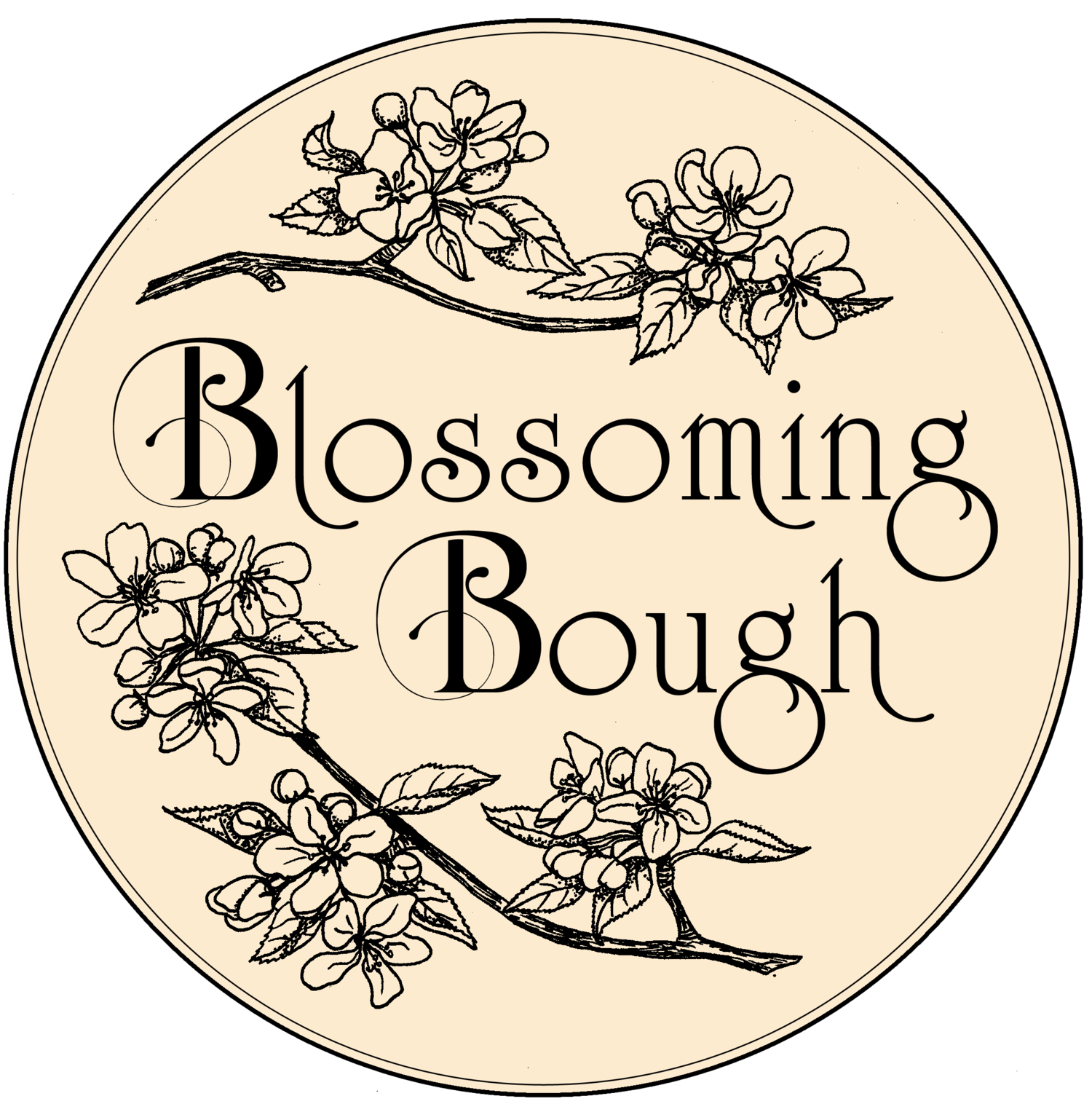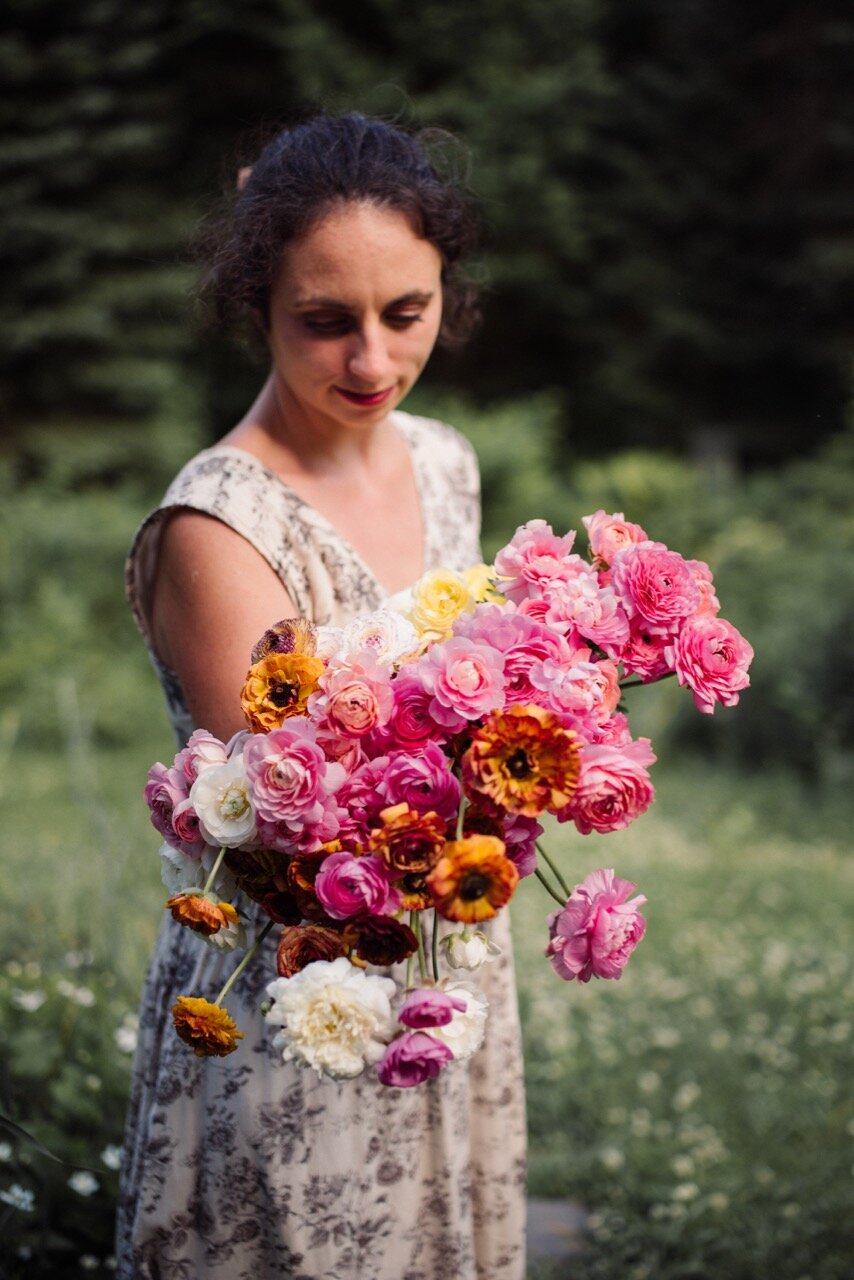Shipping Details:
Dahlia tubers will ship during the month of April into the first half of May (generally, by May 10 at the latest unless your order is received close to or after that date). We do not ship earlier than April because our cold climate in northern Vermont means that there is still a chance that the tubers could freeze in shipping until mid April most years. You’ll receive precise shipping information and a tracking number when your order ships out.
Upon the arrival of your tubers, unpack them and check for damage. It’s common for sprouted eyes to break in shipping, but each eye is capable of producing new shoots even when a shoot breaks off at the base, so your tuber should be fine.
Tubers will be shipped packed together in a compostable plastic zip bag and wood shavings, inside a padded shipping box. Your order packing slip will help you identify your tuber varieties if needed— the SKU numbers on the packing slip include the variety name abbreviation we use on each tuber.
Tuber Health:
Dahlia tubers are extraordinarily resilient plant parts. They can be a bit withered, flexible, and wrinkled after a winter’s storage but will nearly always still grow. We only send out tubers that we are confident will grow if treated correctly, upon arrival. Some of them have visible “eyes” (buds for top growth) while others may have eyes that are hard to detect until 2-4 weeks after planting in semi-moist soil. In almost all cases, every tuber we sell will grow if cared for correctly. We have become expert at seeing even very dormant dahlia eyes and look for them on every tuber we pack.
We are extremely careful to cull for disease if anything funky appears during the growing season, and sterilize cutting tools with rubbing alcohol between each plant during pinching, flower harvest, and tuber division.
Tuber Shape & Size:
Tubers vary greatly in size and shape according to the dahlia variety and the specific conditions the season the tubers grew. We find that tubers as small as an AA battery produce a fine, blooming plant given moist, fertile enough soil and sufficient light. Our tubers may be small or large, thin or bulbous in shape, firm or slightly spongy to the touch, smooth or rough or slightly wrinkled in texture. Sometimes our dahlia divisions will consist of 2 small or thin, joined tubers, if we have found through experience that a better plant results this way. We find that if a thick and bulbous, large tuber is longer than about 5 inches, it’s best to cut it in half, and let the end with the crown cure for a couple days indoors before planting. Large (bigger than 1.5” across and 6” long) tubers in our experience need to be trimmed like this to induce the plant to produce more new tubers instead of relying only on the single large mother tuber for more than one season.
Dahlia Terms of Service:
We sell only dahlia tubers we are confident will grow, are true to name, and free from disease. We are not responsible for customer negligence, weather conditions, postal service shipping issues, rodent damage, winter storage, or performance of plants in following seasons.
Each tuber will grow into a full size plant that will bloom the first year under proper growing conditions. All dahlias should emerge from the soil within 3-5 weeks after planting. For any dahlia that does not emerge after 5 weeks, please dig it up and contact us immediately with photographs of the tuber, for further instructions, no later than August 1 of the same growing season. Any other concerns regarding your growing dahlias must be reported by October 1st of the same growing season. We reserve the right to request photographs before refunds will be made.
Variety Identification:
We write the variety name (or an abbreviation thereof) with a permanent marker on each tuber or tuber cluster we send out. Your packing slip includes these abbreviations plus the full variety name in each variety’s SKU number.
Tuber Storage After Arrival:
Do not let tubers sit around for long (no more than 2-3 days) before you plant unless you are already familiar with storing dahlia tubers in your particular conditions. Store dahlia tubers in wood shavings in a closed plastic container, plastic bag, or cardboard box. STORE BETWEEN 40-50 DEGREES F UNTIL PLANTING and do not place them near heat sources or drafty areas. If they are stored at warmer temperatures than 50 F they will dry out, and if stored colder than 40 F they may rot. Check them each week until you are able to plant and spritz with a bit of water if they look a little shriveled, or clean off any mold that develops. If visible condensation forms in the bag or container, open it and let it air out for a day. We are not responsible for customer storage conditions.
Basics of Dahlia Tuber Planting:
Plant close to your last frost date— if you wish to push them to grow and bloom earlier, plant tubers in large (1 gallon or greater) pots in a warm greenhouse or grow room a month or two before your last frost. Be aware, however, that the roots and tubers are very quickly stunted by pot growing and will be slower to bloom if they become at all rootbound. All parts of the dahlia plant, including the tubers, are extremely frost sensitive and will be damaged if exposed to temperatures below freezing. We have sometimes planted ours a week or two before our last frost date, protecting the beds with frost blanket or mulch, as the top growth usually takes 1-2 weeks to emerge aboveground. This has worked well for us but the best dahlias we’ve had were planted in early to mid June, after last frost, and (naturally) watered heavily and often due to an extremely wet, cool summer. The later planting and more water during growth resulted in earlier bloom than earlier spring planting in dryer seasons.
Amend the soil with plenty of well-rotted compost, but do not use high-nitrogen fertilizer.
Plant tubers 2-5” below the soil surface, 10-18” apart, with the tuber lying horizontally (prevents issues if you cannot distinguish which end is the crown). Gently press soil around and over the tuber and DO NOT WATER until you see green growth sprouting above ground. Don’t worry about rain— they should be fine if it rains before their top growth appears.
Use slug bait and/or regular application of diatomaceous earth around the new shoots.
I mulch heavily with hay, last year’s grass clippings, or fallen leaves once the plants are around 8-12” tall.
For lots of detailed growing information, please consult Floret Flower Farm’s “How to Grow Dahlias” and/or Swan Island Dahlias’ growing information page.
If you have any questions, please email us!
Happy Dahlia-ing!





